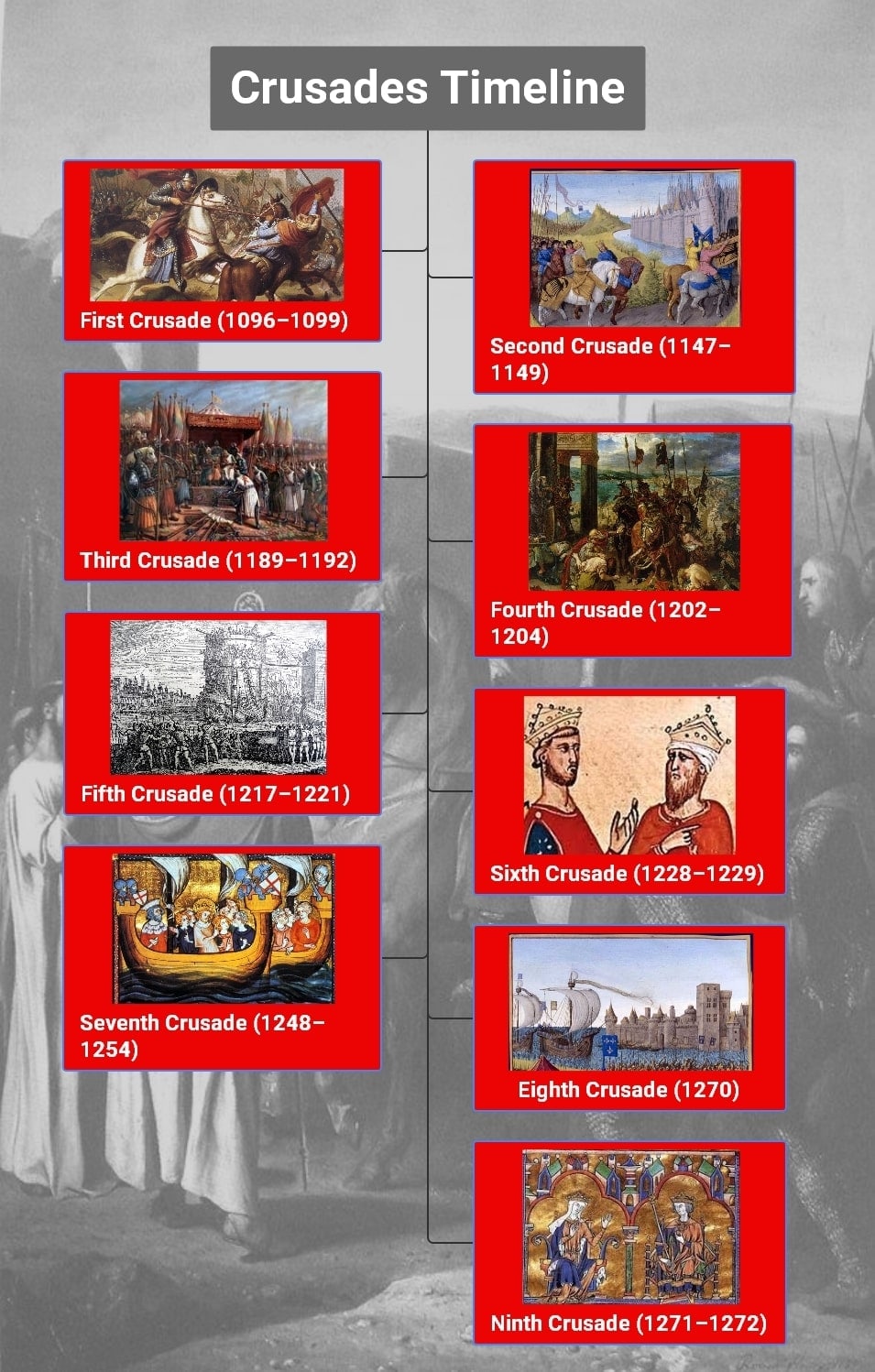Crusades are remembered as the era of holy wars. Medieval history is full of wars, powerful kings, and clashes between East and West. Crusade is a series of military campaigns and fights to take the Holy Land from the Muslims.
The Crusade Timeline is used to highlight the key events, battles, and different reigns of the holy places.
In this guide, you are going to learn how these battles were fought and what the outcomes were for each, while discussing different kings and rulers. We will create such timelines for you as well. Let's get started!
Crusade Timeline (1095–1291)
The Crusade Timeline helps us understand the key events and battles. From the Pope's call to arms to the fall of Jerusalem and the eventual collapse of the Crusader states, this timeline will guide you through the turning points that not only impacted religion but also redrew political and cultural boundaries across continents.
Here is the crusade timeline discussing the nine crusades, their key events, and battles.
The are Nine crusades, each being remembered by specific events. Different Kings and military leaders tried their best to keep the holy land during these crusades. The famous crusaders and kings fought battles and marked their legacies.
The First Crusade (1096–1099)
Pope Urban II called for the crusade and managed to gain control of Jerusalem from the Muslims. The battles were brutal, and the crusaders finally managed to capture the holy land in 1099. Pope got help from his allies and managed to hold his flag high in the holy land.
The Second Crusade (1147–1149)
Muslims captured the Cunty of Edessa in 1144, and it suddenly sparked fear among the Christians of losing Jerusalem. Crusaders failed to maintain their authority over different regions. This caused damage to their morale and unity, and a lot of questions were raised about their power.
The Third Crusade (1189–1192)
Salahudin, the great Muslim military leader, captured the holy land during this battle. He finally succeeded at the Battle of Hattin. He gained full control, but the Christians were given access to their temples. It was a political move, and the outcome was in favor of both Muslims and Christians.
The Fourth Crusade (1202–1204)
Crusaders tried to capture Egypt but never got a chance to capture the holy land. It was an unsuccessful attempt to get the holy land from the Muslims. Crusaders changed their plans and diverted to Constantinople due to debts to Venice.
The campaign ended up causing more damage to the crusaders as they never managed to reach the holy land, which is considered to be a defeat.
The Fifth Crusade (1217–1221)
The fifth crusade was a strategic plan to weaken the Muslim region by capturing Egypt again. Crusaders managed to capture Damietta, but could not hold on to the power and ended up losing Damietta. They surrendered, and this has hit them hard. The main reason was the Nile flooding and the spreading of different diseases after the floods.
The Sixth Crusade (1228–1229)
Emperor Frederick II tried to communicate with the Muslims, and they agreed to the peaceful handing over of the holy land. It was a successful political moment. They captured the land without fighting explains their power in the region, and it marked their names to remember. The power of diplomacy over warfare against a strong power is commendable.
The Seventh Crusade (1248–1254)
Jerusalem fell again, and King Louise IX started a new campaign to capture Egypt. But, in the end, his military failed and fell into a trap and lost control of Egypt again. Louise was captured by the Muslims and ransomed. However, he gained respect for his efforts.
The Eighth Crusade (1270)
The eighth crusade was a failure again, and Louise IX was still committed to capturing the holy land. This time, he turned to Tunis before capturing Egypt. He dies after reaching North Africa, and this crusade felt short; no profitable results were observed.
The Ninth Crusade (1291)
It is better known as the fall of Arce. It was the end of the Crusades, and Muslims captured the Arce. So, Christians never tried to recapture the holy land again. So, it was the end of their campaign.
How to Make Such a Timeline
The timelines are the best way to understand the events that happened in sequence. They make our design visually attractive and more understandable. But, how to make such a timeline? All you need to do is find a tool that suits our needs and provides all the tools that are needed to make an attractive design.
EdrawMind is such a tool that offers an easy-to-use and attractive design. Here are a few of the key features of EdrawMind that make it stand out among all the other diagramming tools.
Features of EdrawMind
- User-Friendly Interface: EdrawMind offers an Intuitive interface and drag-and-drop functionality with an easy learning curve—perfect for beginners and professionals.
- Multiple Diagram Modes: It supports mind maps, fishbone diagrams, timelines, org charts, and more to suit different thinking patterns.
- Rich Templates & Themes: EdrawMind offers 1,000+ ready-to-use templates and stylish themes for visually engaging presentations.
- Cross-Platform Compatibility: It is available for Windows, macOS, Linux, iOS, Android, and Web. So, it is all over the place.
- AI-Powered Mind Mapping: EdrawMind generates ideas and builds maps using AI assistance for smarter brainstorming. The AI tools make the designs easier and offer design by just putting in the prompts.
- Export Options: The files are exported in different formats, including JPG, SVG, PDF, and many more. So, it is feasible for all the users.
Now, it's time to create the timeline on EdrawMind. Let's check it out!
Step-by-Step Guide to Create a Timeline
Here is a step-by-step guide to creating a timeline with the help of EdrawMind. Follow these steps to make your work smoother.
Step 1Open the EdrawMind
- Open EdrawMind and click Create to open the canvas.
- Click New MindMap to do the same.
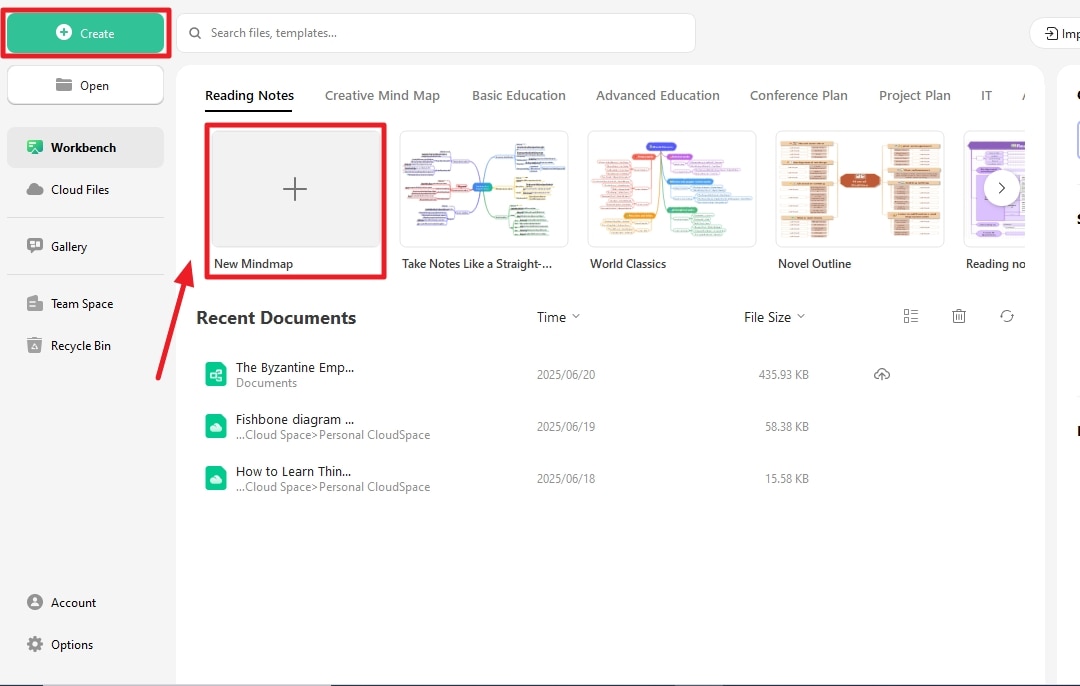
Step 2Edit the Details and Text
- Choose the main topic, just like the Crusades Timeline, edit all the remaining boxes.
- You can add as many boxes as you need.
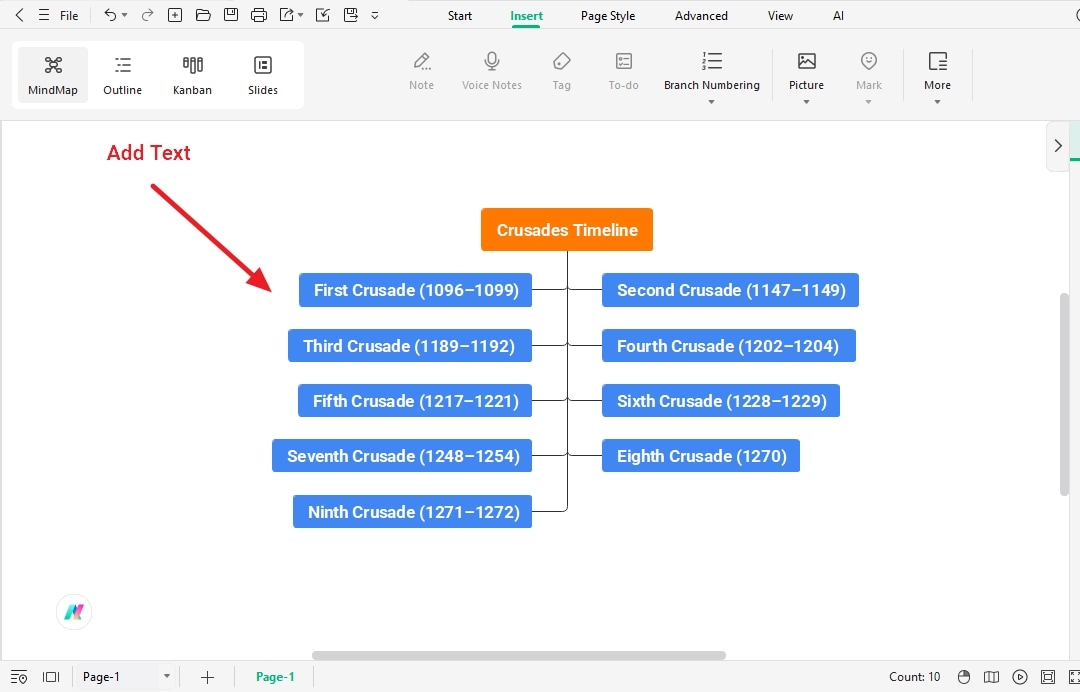
Step 3Add images in their respective Folders/Boxes
- Click Insert at the top of the screen and click the image tool to add the images to your timeline.
- Use the drag-and-drop functionality to paste photos in the timeline.
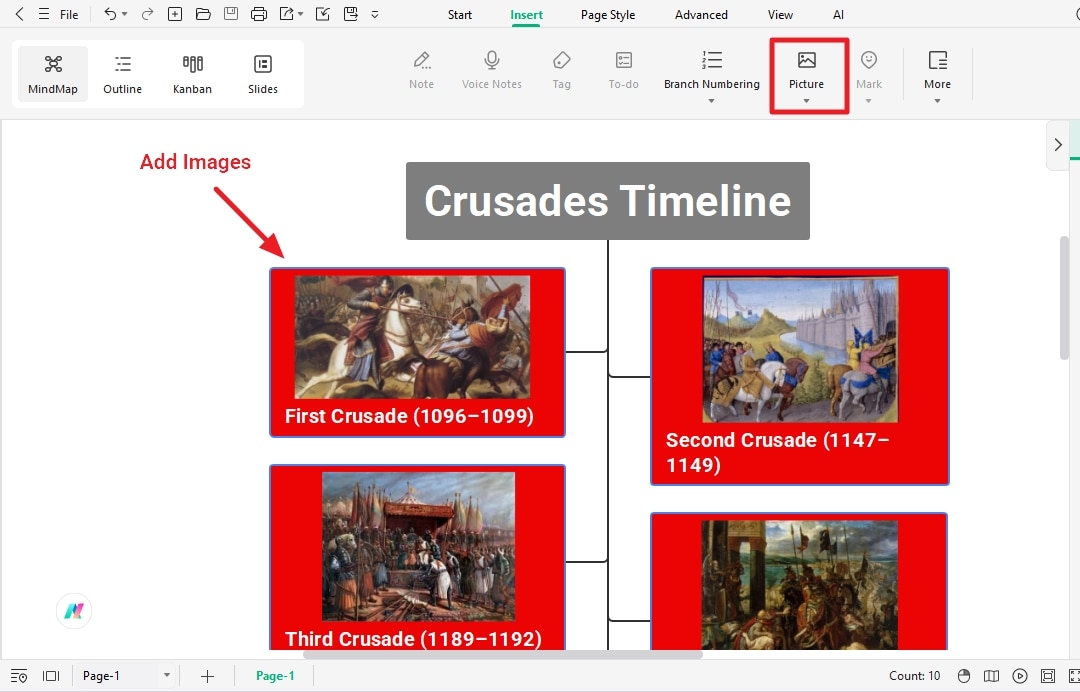
Step 4Change Colors, themes, and layouts
The colors, layout, and themes are changed from the left side of the screen.
Select the theme and color combination that suits your needs.
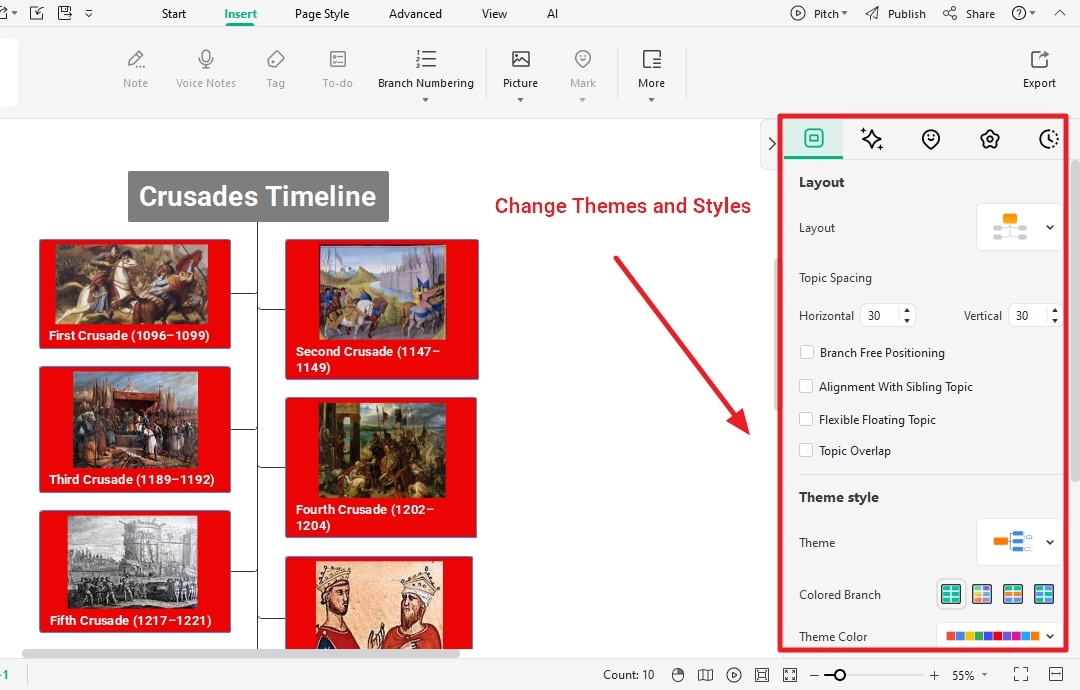
Step 5Export your File
Once all the editing is done,
- click export to save the timeline.
- Don't forget to save the file if you want to make any changes shortly.

That is, it and your timeline are ready. That is how easy it is to make the timeline. Follow these steps and help yourself to make the best timeline that suits your needs.
Final Words
The Crusades Timeline tells us the story of the Christians, especially the people from France, trying to capture the holy land of Jerusalem. They succeeded a few times but failed a few times as well. These timelines are vital to read the key events and histories from the regions, kings, and battles.
So, these timelines always give us a sense of knowledge and help us learn better ways. So, if you are willing to make such a timeline, EdrawMind is one of the best tools to create attractive timelines. So, what are you waiting for? Give EdrawMind a shot and create some amazing timelines for yourself.



